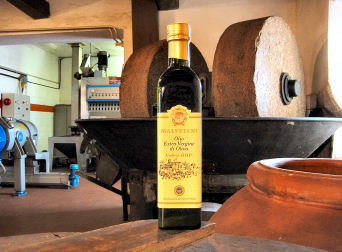
Oil has always been a basic element of the Mediterranean diet, well known and appreciated all over the world, for its taste and as a balanced and equilibrated supply of calories.
In ancient times Greeks and Romans already acknowledged nutritional and curative virtues of olive oil.
Today, having concrete scientific proofs, dietologists and nutritionists all over the world confirm that the olive oil is healthy and that it is a precious ally against the “diseases of affluence”.
Extra-virgin olive oil is excellent for children’s diet because it is very rich in oleic acids. It is very useful late in life since it prevents the arteriosclerosis and limits the calcium loss in bones. It is rich in vegetable fats, so important for supplying our body with health and energy. And last but not least, it is delicious.
There are many different qualities of olive cultivated inLe Marche and their fruits are used both as a food in itself and for oil production.
The cultivation of the olive tree has ancient origins. Evidence of the quality of the olive oil from the Marches can be found back in Medieval times when the ships, (coming from the Marches region) in order to be able to berth on the shores of Ferrara, were charged a toll, the ‘ripatico’, which took the form of twenty five pounds of oil. This is the historical proof that the oil from the Marches was considered to be superior to that from other areas.
But quality has made a further step today with the Production of monovarietal olive oils due to their favourable chemical and sensory characteristics..
Monovarital or monocultivar oil, represent interesting prospectives for a niche market, reserved only for the more discerning consumer.
Small-scale producers, limited handmade manufacturers, small individual producers (milling their own olives) located throughout all Le Marche, use olives grown on small areas of land in all altitudes and with the highest quality pressing techniques garantee a most healthy and wholesome product.
The typical varieties and the autochthonous species are:
Ascolana Tenera
Ascolana Dura
Capolga
Carboncella
Cornetta
Coroncina
Lea
Mignola
Nebbia del Menocchia
Nostrale di Rigali
Oliva Grossa
Orbetana
Piantone di Falerone
Piantone di Mogliano
Raggia
Raggiola
Rosciola Colli Esini
Sargano di Fermo
Sargano di San Benedetto
See on marchebreaks.com
via Tumblr http://italianentertainment.tumblr.com/post/42687494959
